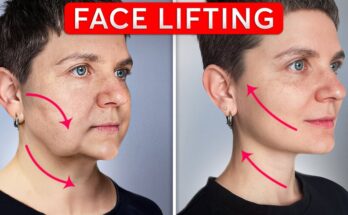The number of individuals impacted by these policies is relatively small, but significant. According to the Bureau of Prisons, there are approximately 1,500 transgender women in federal custody. Despite their small overall numbers, they constitute an outsized portion of the female inmate population, making up 15 percent of women in prison. Additionally, there are 750 transgender men among the roughly 144,000 male federal prisoners.
Transgender individuals comprise less than 1 percent of the adult U.S. population, according to the Williams Institute, a research center at UCLA’s law school focusing on L.G.B.T.Q. demographics. The disproportionate representation of transgender people in federal prisons is not fully understood, but experts attribute it to studies showing that transgender individuals are more likely to encounter law enforcement due to systemic discrimination, family rejection, and economic hardship.
Federal data highlights the vulnerability of transgender inmates, showing they are 10 times more likely to report sexual victimization than other prisoners.
The U.S. Supreme Court addressed the unique risks faced by transgender prisoners in its 1994 decision Farmer v. Brennan. The case involved Dee Farmer, a transgender woman who reported being raped while housed with male inmates. The Court ruled that the government has a responsibility to protect prisoners from violence.
Dee Farmer now leads Fight4Justice, a nonprofit advocating for L.G.B.T.Q. prisoners. She recently cited the case of a transgender woman on suicide watch after being abused in the Washington, D.C., jail—a facility outside the Bureau of Prisons’ jurisdiction.
The Bureau of Prisons has informed transgender inmates about upcoming changes, causing significant concern. “Yesterday, I received three calls from inmates who were in a panic over what might happen to them,” said an advocate.
Currently, the Prison Rape Elimination Act considers transgender status as one of several factors when determining housing assignments. However, the new executive order directs that these regulations be revised “as necessary.”
During the Obama administration, the Bureau of Prisons issued guidance recommending that transgender inmates generally be housed according to their gender identity. This policy was altered during President Trump’s first term, requiring placement based on “biological sex” except in rare instances. However, the Trump administration did not prioritize this as a central policy issue. President Biden later reinstated the Obama-era guidelines.
In the 2024 presidential race, Republicans leaned heavily into framing Democrats as out of step with mainstream views on transgender issues. One prominent ad targeted Vice President Kamala Harris for her past support of “taxpayer-funded sex changes for prisoners” during the 2020 Democratic primaries.
While some of Trump’s supporters had anticipated an immediate executive order on transgender athletes in sports, affecting a broader population, they welcomed the prison directive as an indication of his commitment to addressing transgender-related policies.
We’re encouraged to see these protections for privacy in women’s prisons and rape shelters, ensuring that no woman has to endure abuse, harassment, or the loss of privacy and dignity from a man sharing these intimate spaces,” said Matt Sharp, senior counsel and public policy director at Alliance Defending Freedom, a conservative legal advocacy group.
The executive order mandates an end to all gender-transition medical care for inmates, stating that no federal funds should be used “for any medical procedure, treatment, or drug aimed at conforming an inmate’s appearance to that of the opposite sex.”
The American Medical Association considers treatments that “affirm gender or treat gender dysphoria” to be medically necessary. These treatments can include psychological counseling, surgical procedures, and hormone therapy. For trans women, estrogen therapy is often sought for its effects, such as breast development, reduced body hair, and changes in fat distribution.
Halting such treatments can reverse these changes, leading to significant emotional distress. Jasmine Tasaki, a transgender woman and executive director of Black and Pink, a national organization advocating for incarcerated L.G.B.T.Q. individuals, explained the emotional toll. “If someone is taking hormones and they have breasts, their breasts would leave. Can you imagine, as a woman, watching your breasts disappear?” she said, emphasizing the depression this could cause.
Research consistently shows that transgender individuals face disproportionate challenges in the criminal justice system. Many are housed according to their sex assigned at birth, often without adequate medical care, and are significantly more likely to be placed in solitary confinement, which prisons often claim is for their protection. Solitary confinement, however, frequently exacerbates psychological harm.
Ms. Tasaki recalled times when she was isolated and denied basic needs, such as the ability to bathe.
In Florida, a policy implemented last fall imposed additional hardships on transgender inmates. According to a lawsuit filed by the American Civil Liberties Union, prison officials required transgender women to cut their hair, surrender their bras, and navigate stricter barriers to access gender transition-related care.




